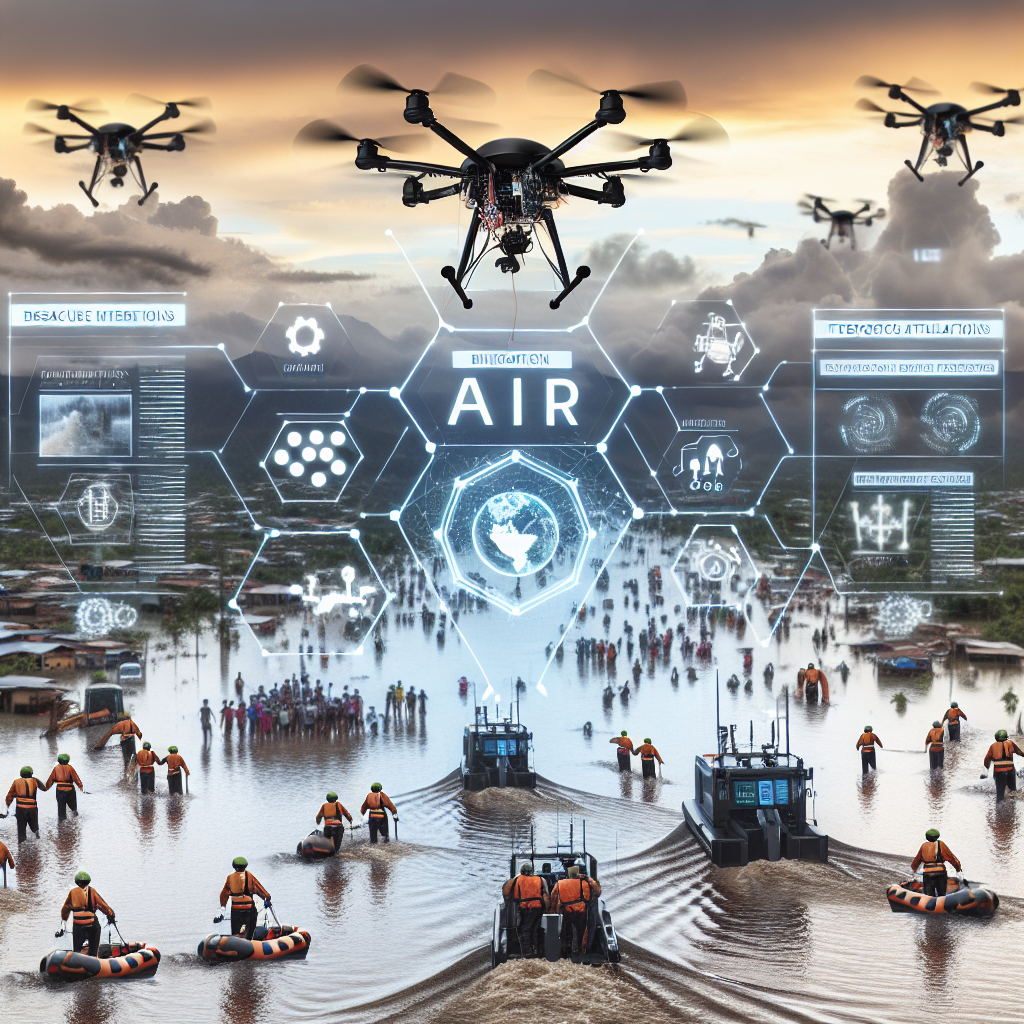In recent years, the integration of artificial intelligence (AI) into disaster recovery and response efforts has been gaining momentum. AI technologies have the potential to significantly improve the efficiency and effectiveness of disaster management by providing real-time data analysis, predictive modeling, and automated decision-making capabilities. By harnessing the power of AI, organizations and governments can better prepare for, respond to, and recover from natural disasters, pandemics, and other emergencies.
One of the key ways in which AI is optimizing disaster recovery and response is through the use of predictive analytics. By analyzing historical data and current trends, AI algorithms can forecast the likelihood and impact of disasters, such as hurricanes, earthquakes, and wildfires. This enables organizations to proactively allocate resources, develop response plans, and mitigate risks before a disaster occurs. For example, AI-powered models can predict the path of a hurricane with greater accuracy than traditional forecasting methods, allowing for more targeted evacuation orders and emergency preparations.
Another way in which AI is enhancing disaster recovery and response efforts is through the use of unmanned aerial vehicles (UAVs) or drones. Drones equipped with AI-powered sensors can quickly assess disaster-affected areas, identify hazards, and locate survivors in need of assistance. These drones can also be used to deliver emergency supplies, map out damaged infrastructure, and provide real-time situational awareness to first responders. By leveraging AI technology, organizations can streamline search and rescue operations, reduce response times, and minimize risks to human rescuers.
Furthermore, AI is revolutionizing communication and coordination during disasters. Chatbots and virtual assistants powered by AI can provide up-to-date information on evacuation routes, emergency shelters, and government assistance programs. These virtual assistants can also answer common questions, triage urgent requests, and connect individuals with the appropriate resources. By automating routine inquiries and tasks, AI technologies free up human responders to focus on more complex and critical aspects of disaster response.
In addition to aiding in disaster recovery and response, AI can also play a vital role in post-disaster recovery efforts. By analyzing satellite imagery, social media data, and other sources of information, AI algorithms can assess the extent of damage, prioritize reconstruction projects, and optimize resource allocation. This data-driven approach enables organizations to rebuild more efficiently, reduce costs, and accelerate recovery timelines. For example, AI-powered image recognition algorithms can quickly identify damaged buildings and infrastructure, allowing for targeted rebuilding efforts and faster restoration of essential services.
Despite the many benefits of AI integration in disaster management, there are also challenges and limitations to consider. One concern is the potential for bias and discrimination in AI algorithms, which can lead to unequal treatment of vulnerable populations during disasters. To address this issue, organizations must ensure that AI systems are trained on diverse and representative data sets, regularly monitored for biases, and transparent in their decision-making processes. Additionally, there are concerns about data privacy and security when using AI technologies in disaster response, as sensitive information may be at risk of hacking or misuse. To safeguard against these risks, organizations must implement robust cybersecurity protocols, data encryption techniques, and compliance with regulatory standards.
To address some common questions about AI integration in disaster recovery and response, here is a FAQ section:
Q: How can AI help improve early warning systems for natural disasters?
A: AI technologies can analyze data from sensors, satellites, and weather forecasts to detect patterns and anomalies that signal the onset of a disaster. By leveraging machine learning algorithms, early warning systems can provide more accurate and timely alerts to at-risk populations, enabling them to take proactive measures to protect themselves and their communities.
Q: What are some examples of AI applications in disaster response?
A: AI-powered drones can be used for damage assessment, search and rescue operations, and delivery of supplies in disaster-affected areas. Virtual assistants and chatbots can provide real-time information and assistance to individuals in need. Predictive analytics can help organizations anticipate the impact of disasters and allocate resources accordingly.
Q: How can organizations ensure the ethical use of AI in disaster management?
A: Organizations should establish clear guidelines and policies for the ethical use of AI technologies, including principles of transparency, accountability, and fairness. They should also conduct regular audits and assessments of AI systems to identify and address biases, errors, and ethical concerns. Collaboration with stakeholders, experts, and affected communities is essential to ensure that AI is deployed in a responsible and inclusive manner.
In conclusion, AI integration in disaster recovery and response has the potential to transform the way we prepare for and mitigate the impact of emergencies. By harnessing the power of AI technologies, organizations can enhance early warning systems, streamline response efforts, and expedite recovery processes. However, it is crucial for organizations to address ethical, privacy, and security concerns when implementing AI in disaster management. By adopting a data-driven and inclusive approach, we can leverage AI to create more resilient and responsive systems that protect lives and livelihoods in times of crisis.

